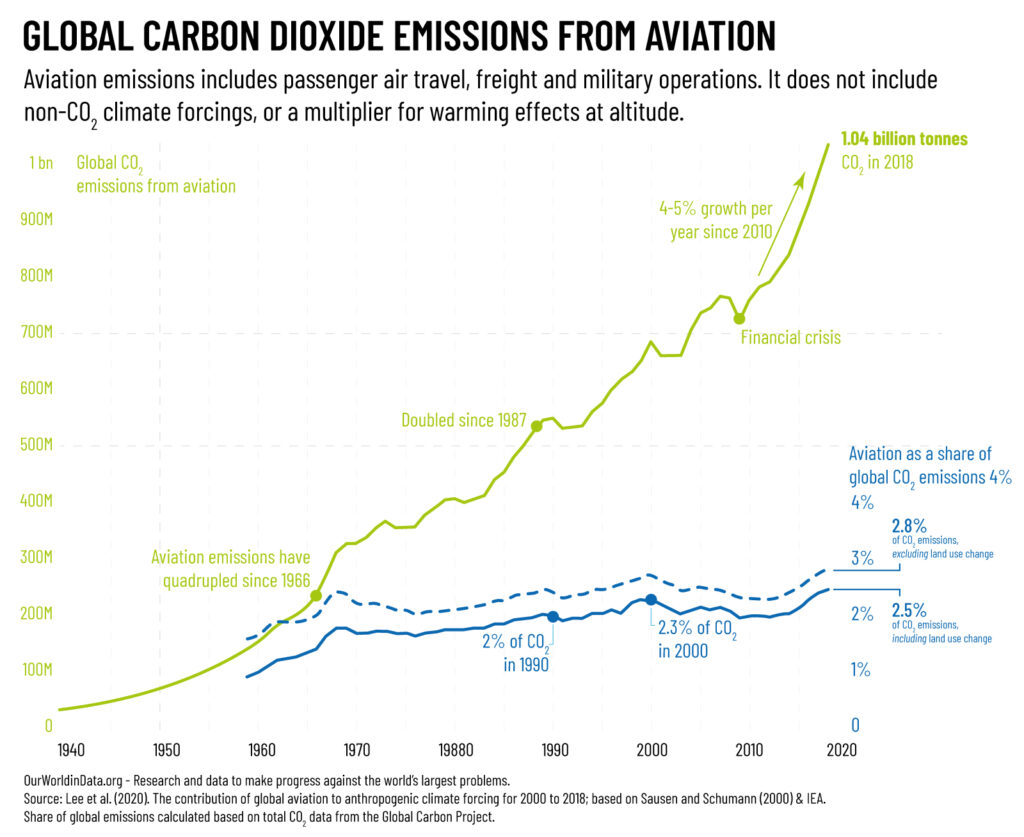Radical thinking is the need of the hour if we are to decarbonise aviation at scale
Humankind today finds itself poise to take off into a brave new world, one in which our means of mobility is increasingly powered by renewable energy. It is an admirable transition that is much needed for the betterment of the planet, and one that the aviation industry at large has embraced too, as seen by its commitment to going net-zero by 2050.
Admirable though it is, the road ahead to reach the promised land is a long one. But no matter whether that goal is realised or not, the technologies being conjured to get there promise to change aviation for the better.
The need to decarbonise aviationViewed through the lens of pre-pandemic times, aviation has always been a major source of carbon dioxide (CO2) emissions, accounting for approximately 1 billion metric tons on an annual basis. To put it in perspective, that is as much as could be attributed to the continent of South America in 2021. And those numbers are only set to go up as passengers throng to airports as pandemic travel restrictions ease off.

Aviation accounts for around 2.5% of global CO2 emissions, and approximately 3.5% of global warming. It’s all a bit complex, with more than just aviation’s emissions contributing to global warming; even things such as the contrails a plane leaves in its wake contribute to heating up the planet. That’s all the more concerning, given the rising demand for aviation, and forecasts by Airbus and Boeing that say usage could double over the next two decades.
However, the emergence of new technologies, such as aircraft powered by hydrogen, synthetic jet fuel crafted from carbon extracted from the atmosphere, and even electricity are giving cause for optimism. Sustainable Aviation Fuel (SAF) has already found takers among operators, with more lining up to do so as government regulations around emissions spark innovative responses to go green.
Exploring alternative options
While airlines are looking to short-term changes, such as taxiing with just one engine running, or letting older planes fly off into the sunset, the true wins are to be found in long-shot innovations, such as SAF.
One of the upsides of SAF are lower levels of CO2 emissions, but it remains expensive and in limited supply, thus slowing its uptake, even as a coalition of more than two dozen airlines pledged to make SAF account for 10% of the aviation’s fuel supply by 2030. But given that even SAF emits CO2, scientists are exploring options that allow for more sustainable solutions. This includes alternative sources of carbon, such as algae, yard trimmings and food waste.
But what of the air we breathe? Is that not full of CO2?
Clearly, some scientists thought of this too. Using a process known as Power-to-Liquids, CO2 can be extracted from the atmosphere and combined with hydrogen to create carbon-neutral fuels that can power an airplane, and be stored easily and relatively inexpensively. The catch: high costs on account of clean energy required to produce the fuel in significant volumes. But scientific advances mean that the cost of renewable electricity is rapidly falling, so much so that by 2035 “power-to-electric” fuel could be cheaper to produce than a majority of SAF.
Hydrogen represents the holy grail, a true zero carbon fuel source, and it has been on the scene since decades. But the engineering challenges around storing the voluminous element are almost insurmountable, necessitating the creation of cryogenic infrastructure to store it as a liquid at -253 °C, a process that adds cost complications of its own. Doing so is still in the realm of possibility; NASA and the European Space Agency are known to use it, and Airbus and Rolls-Royce are looking at commercial applications of the technology.
While electric mobility is de rigueur on the ground, energy losses and battery capacities mean that it cannot be used to power large planes over large distances. There is hope for its use in smaller planes on more limited routes though, with Avinor, a Norwegian operator, planning to deploy its first electric aircraft by 2026, and Norway itself looking for all domestic flights to be electric by 2040.
Indian aviation poised for lift-off
Closer to home, Air India’s 470 aircraft order set tongues wagging in the world’s
fastest growing aviation market. Rising disposable income and soaring wanderlust have fueled air traffic demand, with Air India one of many carriers with planes on order. Over 1,100 narrow-body planes have been placed on order by various Indian carriers, with the country’s largest airline IndiGo accounting for approx. 500 planes, Go First in line for 72 aircraft, Akasa Air eyeing 56 planes, and Vistara ordering 17 aircraft. Besides, SpiceJet has aircraft on order.
India represents the world’s third-largest and fastest-growing aviation market in
the world, with India’s pre-COVID traffic of around 75 million international passengers likely to go to 120-125 million over the next decade. Speaking on August 7th last year, Union minister Jyotiraditya Scindia told PTI that the number of air travellers in India are projected to touch 40 crore by 2027, with world-class airports and burgeoning infrastructure emerging to meet the demand.
Equally important is the fact that India is among the countries that has the largest potential to produce SAF, which will be a key growth lever to reduce emissions for the Indian and global aviation industry. One company working on doing so is Honeywell, which has managed to invent an ethanol-to-jet fuel processing technology that converts corn-based, cellulosic, or sugar-based ethanol into SAFs. The company claims this fuel will reduce greenhouse gas emissions by 80%, and its modular property can enable rapid installation to speed up the transition process even more.
From a policy perspective, sources report that policy think-tank NITI Aayog has suggested pegging GST at 5% on SAF, and a waiver of charges like passenger fees and user development fees for flights operating with SAF. At the same time, the Ministry of Civil Aviation is finalising a ground handling equipment policy to define the standards of equipment and maximum age of deployment, and a mandate to all airports to convert all vehicles and equipment to run on electric power. These initiatives could help India reduce total its projected carbon emissions by one billion tonnes by 2030, and give wings to the global aviation industries ambition to fly into a cleaner, greener future.


